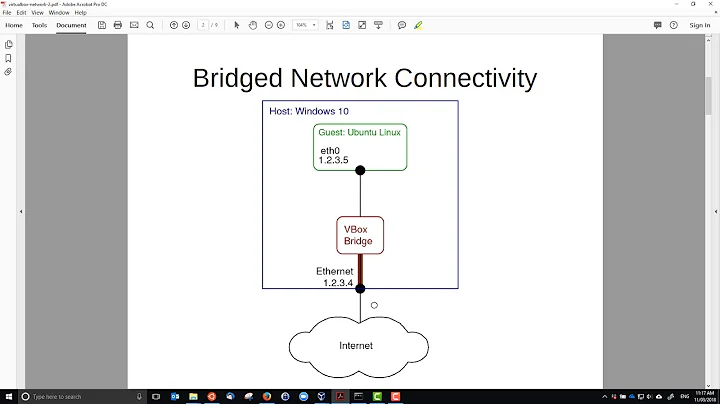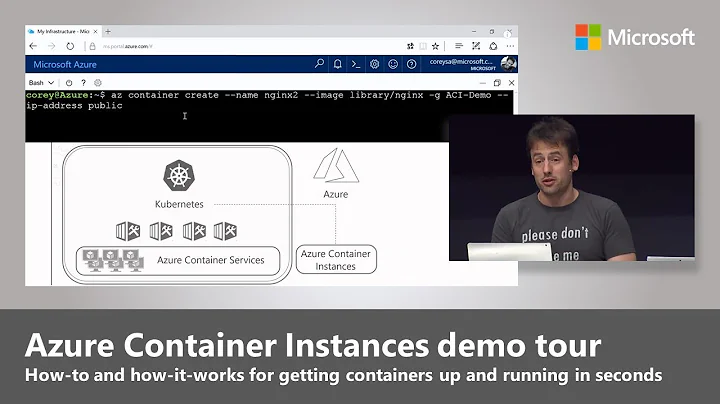Why do I have to use bash -l -c inside my container?
From bash(1):
-
-lMake bash act as if it had been invoked as a login shell -
-cIf the -c option is present, then commands are read from string.
You're running the command passed to the -c argument. -l makes it a login shell so bash first reads /etc/profile, which probably has the path to rvm which is what makes it work.
FWIW, here's what I do to install rvm in a docker container.
# Install some dependencies
RUN apt-get -y -q install curl rubygems
# Install rvm
RUN curl -L https://get.rvm.io | bash -s stable
# Install package dependencies
RUN /usr/local/rvm/bin/rvm requirements
# Install ruby
RUN /usr/local/rvm/bin/rvm install ruby-2.0.0
# create first wrapper scripts
RUN /usr/local/rvm/bin/rvm wrapper ruby-2.0.0 myapp rake rails gem
Related videos on Youtube
Hugo Rodger-Brown
Ex-developer, CTO of various companies and now co-founder of YunoJuno, helping to build a community of the very best freelancer developers, designers, UX and associated digital talents.
Updated on February 21, 2020Comments
-
Hugo Rodger-Brown about 4 years
I've created a docker container using the following Dockerfile (truncated):
FROM ubuntu:12.04 # curl enables downloading of other things RUN apt-get install curl -y # download and install rvm... RUN \curl -L https://get.rvm.io | bash -s stable # ... so that we can install ruby RUN /bin/bash -l -c "rvm requirements"And so on.
This all works, but the problem I have is how / where the packages are installed.
If I just run rvm using
docker run [...] rvmI get "Unable to locate rvm", but if I rundocker run [...] /bin/bash -l -c "rvm"it works. (I found the "-l -c" options online, but have no idea what they do, and can't find a satisfactory explanation of what I'm doing!)This isn't a docker question - it's a bash / *nix question - I presume there's something about how / where things are installed, possibly related to running the install under root?
Just to be clear - I want to be able to run the things that I install direct from the CLI.
EDIT 1
Installing Ruby using rvm is the recommended method, however if you want to run things in a non-interactive, non-login shell (i.e. within a docker container), this just causes too much hassle with paths and environment variables and login scripts not running.
Given that I am using this to run a docker container, which by definition is isolated, and recoverable (just build another one), I don't really care about switching versions, or isolating packages, and so I've decided to install Ruby from a package repo (http://brightbox.com/docs/ruby/ubuntu/) instead. This 'just works'.
It may not work for you - I am only installing Ruby in order to get the Foreman gem, as I am running an app through a Procfile, so I'm not that fussed about the details, I just need it to work. If you're building a Ruby app, I wouldn't follow my advice.
My Dockerfile is here, FWIW, https://index.docker.io/u/yunojuno/dev/
-
Zombo about 10 yearsyou should include output from
type -ap rvmandecho $PATH -
 jdhao over 4 yearsAdding
jdhao over 4 yearsAddingCMD ["bash", "-l"]to your Dockerfile will also work.
-
-
Hugo Rodger-Brown about 10 yearsYup - that's it - thanks. If I run
docker run [...] bash -lfrom the host I get into the container with a shell that works - env vars set etc. So it's getting the commands to run within an login shell when I pass them in to the docker run command that's my challenge. -
Ben Whaley about 10 yearsPerhaps it's just sys admin habit, but I usually like to give fully qualified paths to everything. That way you (hopefully) know what you're running.
-
Hugo Rodger-Brown about 10 yearsYup - that's what I've just done - you beat me to it. And I guess that since the key to Docker is repeatability and reuse, I don't need to worry about things not being where they should be - as they will always be in exactly the same place they were last time.
-
Hugo Rodger-Brown about 10 yearsOf course - now I'm getting ruby errors: /usr/bin/env: ruby_executable_hooks: No such file or directory
-
 Chris Gunawardena over 7 yearsIf I do this and try to do RUN gem, then I get a error gem not found. IMHO it's easier to remember the /bin/bash -l -c "" rather than trying to remember the paths of where everything else.
Chris Gunawardena over 7 yearsIf I do this and try to do RUN gem, then I get a error gem not found. IMHO it's easier to remember the /bin/bash -l -c "" rather than trying to remember the paths of where everything else.























